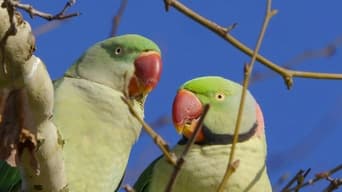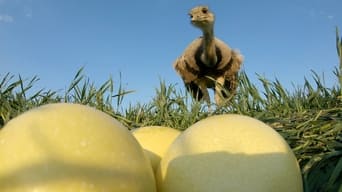

They Came to Stay - Our Alien Animal Neighbours (2022)
Rheas stomp over snow-covered fields of Northern Germany. Flocks of bright green parrots fly screeching over the Cologne Cathedral. And beaver-like nutrias with orange teeth gnaw at French and Dutch canal dams. What do they have in common? They are all non-native and are suspected of causing ecological and economic damage. Although the EU wants to combat such “invasive animals”, the fight against them is proving difficult. A cumbersome and sometimes unprepared bureaucracy, quarrelling scientists and uninformed citizen facilitate the spread of these animals. Must the intruders be fought? When is an animal species actually “native”? Or is constant change in nature not the rule? The series gets to the bottom of the accusations against animal aliens by picking out three relevant and also visually interesting species as examples
Seasons & Episode

Who sits poison-greenly in the treetops of Cologne? The parrot! Also known as the cockatiel. 4,000 of these exotic verdant warblers live in Cologne. Rocketing through the area at 70 km/h, they pollute the city with poop, attack trees with their beaks and, to add insult to injury, squawk. Are these Asian collared parakeets perks or pests, enrichment or imposition? The documentary by the renowned Berlin biologist and nature filmmaker Ostwald explores this question and produces some interesting findings. The species has adapted amazingly quickly to its new living conditions.

A small area in Mecklenburg-Western Pomerania is home to the only colony of wild rheas living in Europe. The forebears of these ostrich-like birds from South America escaped from an enclosure in northern Germany twenty years ago. Since then, they have been multiplying largely undisturbed. Farmers complain about crop losses and conservationists suspect an impact on rare insects. Now, a researcher is on the trail of Europe's largest birds.

Coypus look like beavers with rats’ tails, but they’re South American rodents. Originally escaped from fur farms, over decades they have colonized Europe’s waterways. Here, they dig tunnels and caves in the banks and eat the vegetation. While aquatic farmers and conservationists battle against them rigorously, animal lovers in cities feed and encourage them. So how should we deal with coypus?